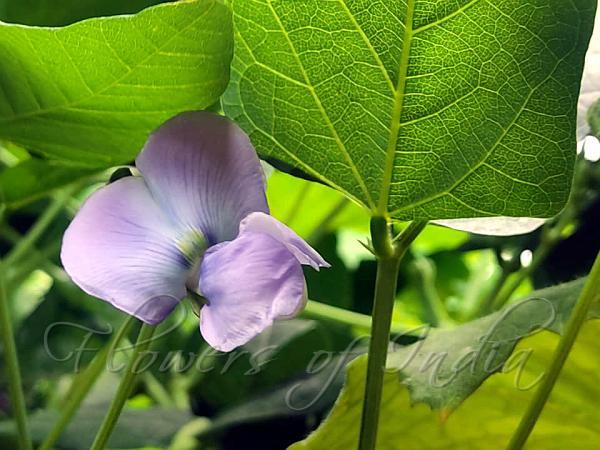|
| Winged Bean |
|

|

|
|
|
|
Photo: |
Botanical name: Psophocarpus tetragonolobus Family: Fabaceae (Pea family)
Winged bean grows as a vine with climbing stems, up to 3-4 m in height.
It is a herbaceous perennial, but can be grown as an annual. Leaves are
compound with 3 leaflets. The leaflets are more or less triangular,
tapering to an acute point, about 3-6 in long and almost as wide at the
widest point. The large flowers are pale blue, but vary in color in
cultivars. They are larger than green bean flowers, a little more than 1
inch long, and hang in loose clusters of 2-10 flowers. The bean pod is
easy to identify - it is typically 6-9 inches long and has four wings with
frilly edges running lengthwise. The skin is waxy and the flesh partially
translucent in the young pods. When the pod is fully ripe, it turns an
ash-brown color and splits open to release the seeds. The beans
themselves are similar to soybeans in both use and nutritional content.
The fruits are used as a vegetable but the other parts (leaves, flowers
and tuberous roots) are also edible. The young shoots and leaves may be
eaten raw or cooked as vegetables.
Winged bean is probably native to Papua New Guinea, and is commonly clutivated and eaten in NE India.
| Identification credit: Thingnam Sophia | Photographed in Imphal, Manipur. |
• Is this flower misidentified? If yes,